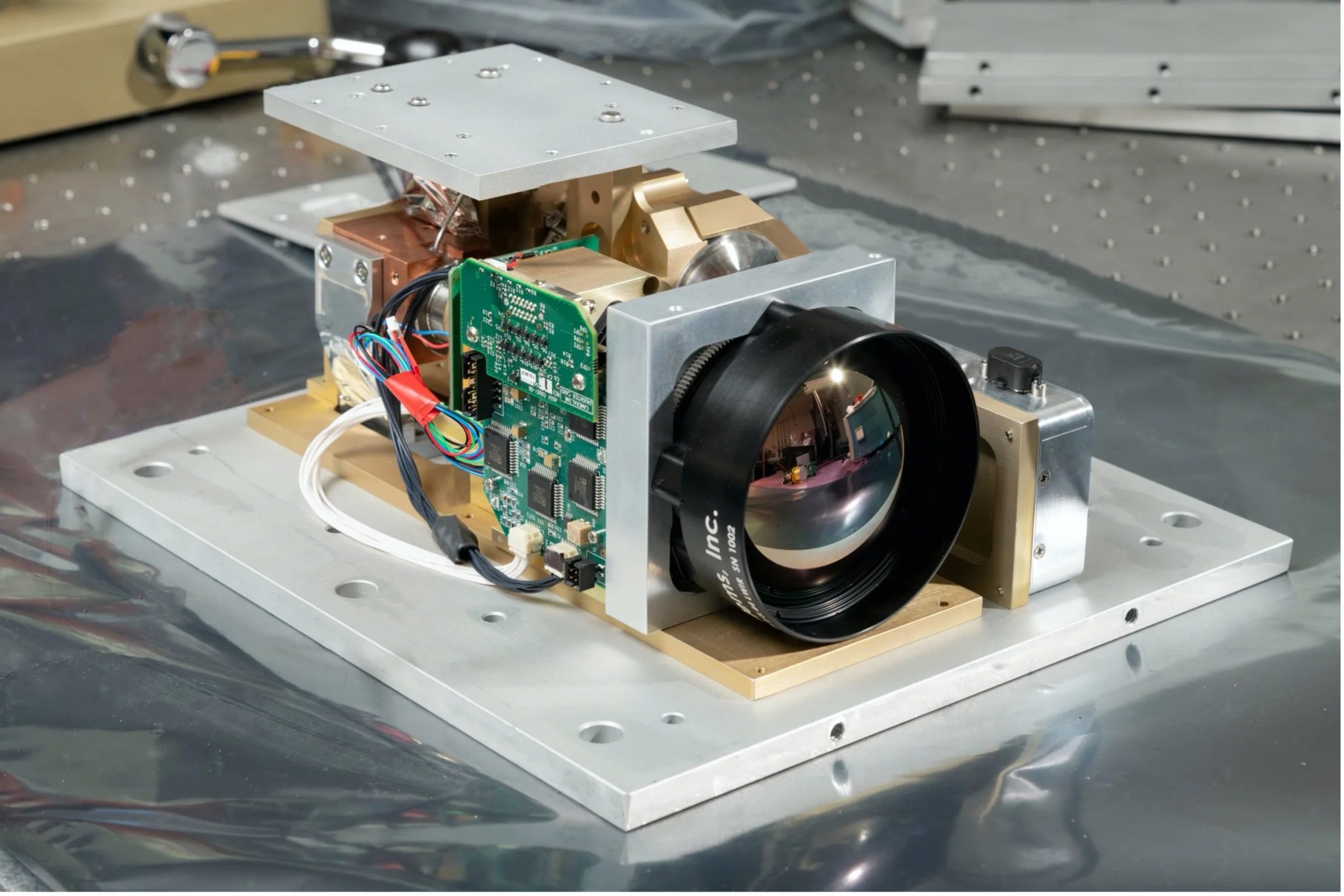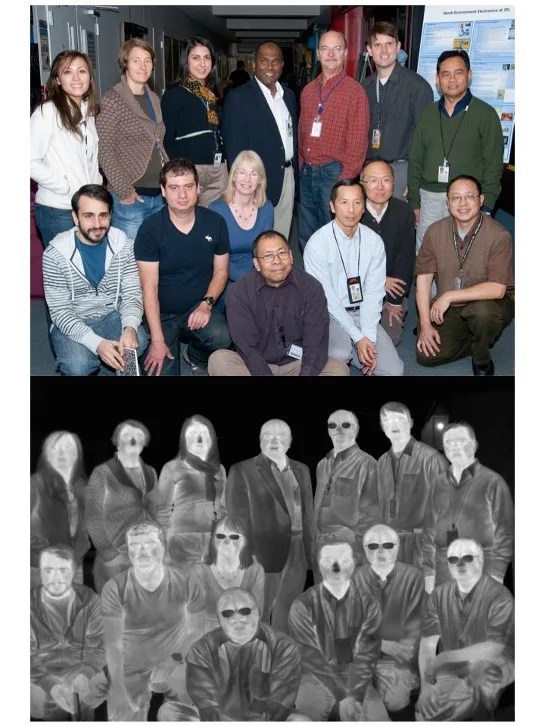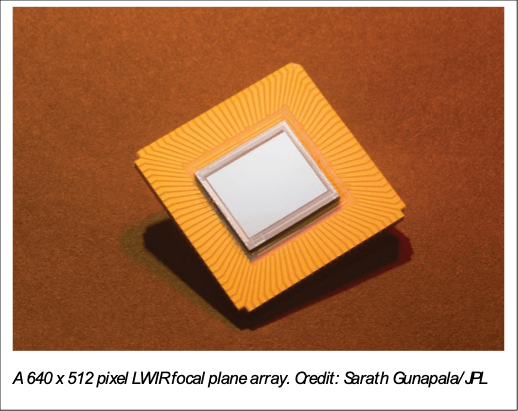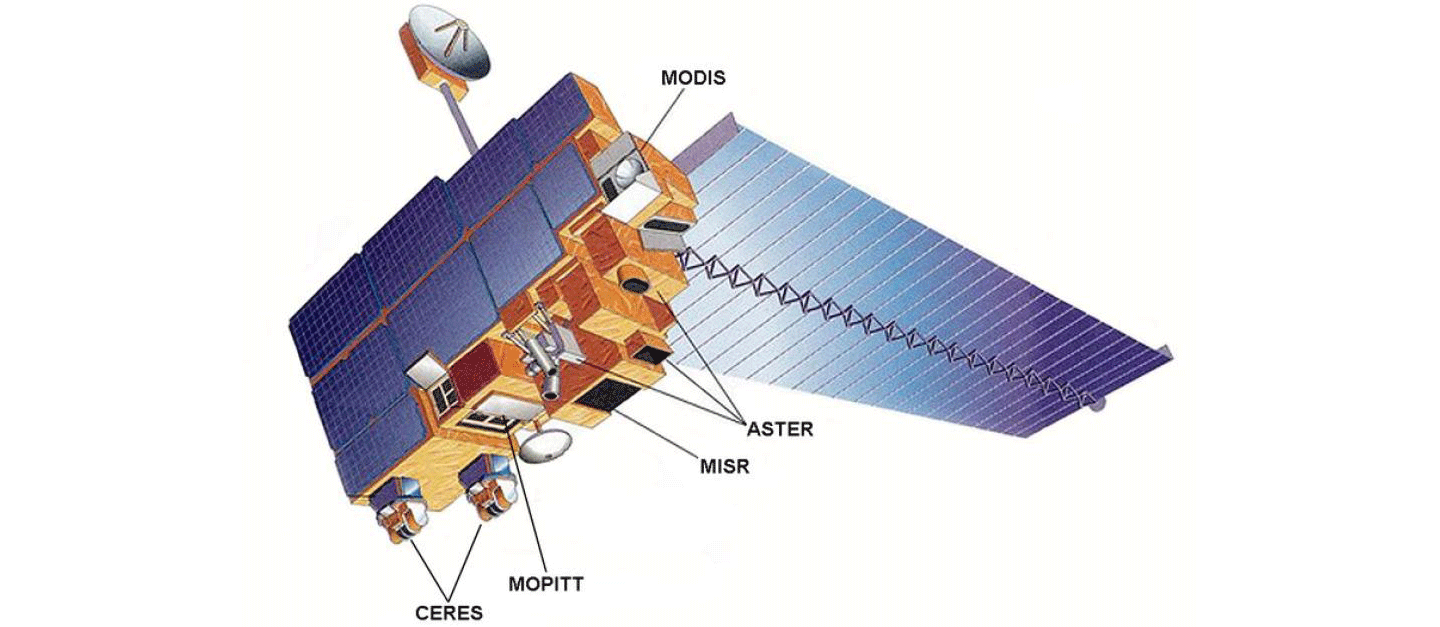PROJECT
Mid-Wavelength and Long-Wavelength Infrared Focal Plane Arrays for Earth Science Applications
SNAPSHOT
NASA is sponsoring development of high-performance infrared sensors with reduced requirements for cooling onboard satellites; these new sensors could potentially be flown on small satellite platforms like CubeSats.
HOT BIRD isn’t hot or a bird. It’s the world-class infrared detector that could revolutionize the way we see our planet from space. A NASA-sponsored team at the Jet Propulsion Laboratory is developing highly sensitive infrared (IR) detectors that could operate onboard satellites without the usual ultra-low cooling equipment typically required. These High Operating Temperature (HOT) Barrier Infrared Detectors (BIRDs) are cheaper to manufacture and easier to accommodate onboard satellites than the IR detectors presently used in space.
Many satellites employ infrared-sensing instruments that detect radiation emitted from Earth’s surface. The long-wave infrared (LWIR, 7-12 micron) and mid-wave infrared (MWIR, 3-5 micron) constitute the thermal region of the electromagnetic spectrum, and are used to measure Earth’s land and sea surface temperature, as well as detect forest fires or other features that are warmer than their surroundings.
The detectors found in these instruments need to be operated at very cold temperatures — as low as 50 Kelvin –– to reduce “noise” from other sources and to deliver stable measurement performance. But the hardware needed for this extreme cooling adds a cost to the overall satellite mission in terms of power, volume, and mass, and prevents infrared instruments from being flown on smaller platforms such as CubeSats.
A project led by Sarath Gunapala at the Jet Propulsion Laboratory is exploring several component-level technologies that could enable LWIR and MWIR focal plane arrays (FPAs) with significantly higher operating temperatures, requiring only a simple, small single-stage cooler.
How Hot is HOT BIRD?
Creating IR detectors is an incredibly tricky process that requires powerful machines, state-of-the-art nano-fabrication tools, and a high degree of skill—all of which make it a very expensive undertaking. In addition, these arrays must be operated at very low temperatures, which requires extensive cryo-cooling. Therefore, lowering the manufacturing costs and raising the operating temperatures of these sensors are both highly desirable.
Currently, most infrared photodetectors are made from mercury cadmium telluride (HgCdTe). Over the past two decades, much effort has gone into the search for lower-cost alternatives to this material. Indium antimonide (InSb) is one alternative, although it requires much lower operating temperatures and does not have an adjustable cutoff wavelength like HgCdTe (the cutoff wavelength is the longest infrared wavelength that can be detected effectively). InSb, however, is a very robust material, which means that InSb detectors can be much more cost-effective to make.
HOT BIRD detectors combine the higher operating temperature characteristics of HgCdTe with the material robustness manufacturing advantages of InSb. In addition, the HOT BIRD detectors offer continuous cutoff wavelength adjustability similar to HgCdTe detectors, enabling them for use in multiple applications.
The HOT BIRD team has developed a unique process to create the focal plane arrays that enable these sensors. Using carefully chosen elements and alloys of elements, atoms are deposited onto a special substrate material, coaxed into orderly rows, and then ‘grown’ into three-dimensional crystalline structures called superlattices. After more processing, these artificially created superlattices are fabricated into the BIRD focal plane arrays. Almost every aspect of the process can be customized, or tuned, to achieve specific results or measure a particular infrared wavelength. A versatile and reliable technology like HOT BIRD expands the options for scientists and researchers, allowing them to choose the best tool for the desired application.
This BIRD is poised to fly …..
A HOT BIRD detector will soon be launched as part of the Hyperspectral Thermal Imager (HyTI)—an instrument technology demonstration funded by NASA’s Earth Science Technology Office (ESTO) under the In-Space Verification of Earth Science Technology (InVEST) program. The HyTI payload is designed to fit in a 6U CubeSat planned for low-Earth orbit (LEO). An LWIR HOT BIRD will serve as the detector for HyTI’s FPA. The HyTI mission’s objective is to obtain important spatial, spectral, and temporal information on hydrological dynamics and land surface temperature. This information can be used for water resource management for agricultural applications.

Scientists are actively engaged in developing infrared Earth and planetary imaging applications supported by the NASA Research Opportunities in Space and Earth Science (ROSES), Advanced Component Technology (ACT) and Planetary Instrument Concepts for the Advancement of Solar System Observations (PICASSO) programs. HOT BIRD sensors could potentially be used in NASA space flight projects as well as airborne, balloon, ground based, and in situ instruments to support research in many areas, such as:
- Fire detection
- Seeing where flames are active despite haze or smoke
- Identifying dangerous hot spots that are not visible to the eye
- Imaging land forms on Earth, the Moon, other planets
- Material detection, identification, and measurement
- Monitoring geologic processes, in situ resources
- Monitoring agriculture crops for moisture, nitrogen, chlorophyll, sugars—i.e., are the crops healthy and growing as desired?
- Finding snow and ice
- Atmospheric sounding
- Mapping contamination and hazards (e.g., Superfund sites, oil spills, methane leaks)
- Ecosystem composition and modeling (measuring ozone, CO2, H2O, etc.)
- Enhanced weather detection and prediction (ocean surface temperatures, etc.)
- Atmospheric correction—the ability to see through dust, clouds, haze, etc. (important for safely landing aircraft or helicopters)
- Detecting the presence of electromagnetic radiation (EMR), gravitational fields, magnetic fields, seismic waves, acoustic waves, and other phenomena
- Addressing key science questions related to habitability
PROJECT LEAD
Dr. Sarath Gunapala. NASA Jet Propulsion Laboratory, California Institute of Technology
SPONSORING ORGANIZATION
Earth Science Division‘s Advanced Component Technology (ACT) Program




































